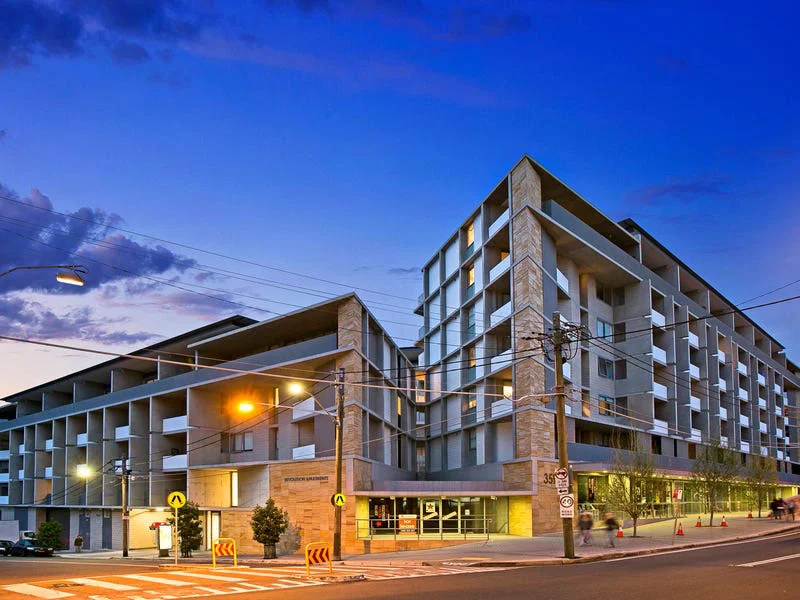
LIFT ASSET & MAINTENANCE PORTFOLIO MANAGEMENT
Ensuring Lift Safety, Compliance & Performance
Your building’s vertical transport plays a critical role in daily operations. Our independent assessment and management services help you maintain compliance, optimise maintenance strategies, and extend the lifespan of your transportation assets.
Tailored Lift Management Solutions
Independent Lift Assessments to Protect Your Assets and Reduce Costs
At Equity Elevator Consultants, we deliver 100% independent lift consultancy services that keep your elevators and escalators safe, compliant, and cost-efficient. Our unbiased compliance audits and strategic asset management plans help strata managers, facility managers, and property owners avoid unnecessary expenses, improve system reliability, and extend the life of their vertical transportation assets.
Our Lift Management Services
Lift Condition Reports & Compliance Audits
- Detailed technical assessments covering safety, performance, and reliability.
- Compliance checks against AS 1735 and the Building Code of Australia.
- Identification of operational risks, non-compliance issues, and cost-saving opportunities.
Lift Maintenance Strategy & Contract Optimisation
- Independent review and re-negotiation of maintenance contracts for maximum value.
- Benchmarking of service providers against clear KPIs and industry best practices.
- Recommendations to reduce unnecessary callouts and eliminate excessive costs.
Lift Lifecycle Planning & Modernisation Guidance
- Strategic forecasting for upgrades, modernisations, and replacements.
- Integration of energy-efficient technologies and smart building solutions.
- End-to-end project management to minimise downtime and occupant disruption.

Independency You Can Rely On
From Compliance Checks to Legal Support, We’ve Got You Covered
From avoiding costly breakdowns to ensuring long-term compliance, our tailored assessments deliver clear, measurable value. Here’s what you gain when you partner with Equity.
Optimise Maintenance Contracts
Identify inefficiencies and negotiate cost-effective service agreements.

The Importance of Proactive Management
Avoid Breakdowns, Fines & Costly Replacements
Without proper lift assessment and asset management, buildings risk unexpected failures, non-compliance fines, and excessive maintenance costs. Our expert assessments ensure:
- Regulatory Compliance
Meeting AS 1735 and WHS standards. - Minimised Downtime
Identifying issues before they escalate. - Budget Optimisation
Preventing unnecessary expenses with strategic planning.
Real Results
How We Reduce Lift Costs & Prevent Failures

Modernisation & Maintenance Portfolio Management in QLD - Mantra Sun City
Replaced four gearless hoist machines, control and drive systems, and car power door operators. Upgraded fixtures and safety with updated lift code and WH&S improvements. Completed defect liability auditing and began ongoing maintenance preparations for three lifts.
Our works commenced with a detailed asset condition and compliance audit, evaluating the existing vertical transportation systems against AS1735 standards and WHS requirements. We replaced four gearless hoist machines, installed new control and drive systems, upgraded car power door operators, and modernised fixtures to improve functionality and accessibility. Enhanced safety features brought the systems in line with current lift codes and WH&S standards.
We also completed end-of-defect liability period auditing and initiated maintenance agreement preparations for three lifts, ensuring sustained performance and compliance. Installation and commissioning were staged to minimise disruption to guests while achieving substantial improvements in reliability, ride comfort, and energy efficiency. The result is a future-ready lift system with extended lifecycle potential, optimised performance, and full compliance with Australian lift safety regulations.

Lifecycle Audit & Tender Management – Market City, NSW
Conducted lifecycle audit with capital planning reports for lifts and escalators. Replaced two loading dock freight lifts with KONE 3500kg MRL Gearless models. Finalised maintenance tender for Market City lifts and escalators, ensuring improved performance, longevity, and cost-effective operational standards.
Market City appointed Equity Elevator Management to conduct a full lifecycle audit of its vertical transport assets. We carried out a comprehensive condition assessment to identify equipment obsolescence, compliance gaps, and modernisation priorities. Our consultancy delivered a detailed technical specification for future works and managed the tender process for a new maintenance contract.
By leveraging our independent position, we ensured competitive contractor selection focused on performance reliability, cost-efficiency, and safety compliance with AS1735 and WHS requirements. The result was the establishment of a proactive maintenance regime designed to extend asset life, improve passenger experience, and reduce unplanned downtime. This project positioned Market City with a strategic roadmap for lift asset management and a partner capable of delivering long-term operational value.

Portfolio Management - Riparian Plaza Apartments, QLD
Comprehensive Assessment of the residential lifts, rectification of maintenance quality improvement and ongoing contracted annual maintenance portfolio management
Riparian Plaza Apartments engaged Equity Elevator Management to conduct a detailed operational and compliance assessment of two high-end residential passenger lifts. We identified performance issues, optimised maintenance schedules, and implemented lifecycle cost-reduction strategies.
Our portfolio management approach focused on improving reliability, reducing service interruptions, and aligning maintenance practices with AS1735 and WHS compliance requirements. The outcome was a measurable improvement in lift performance and an optimised service agreement that provides better long-term value for residents.

Audit - 178-180 Livingstone Road, NSW
Conducted maintenance condition audits, prepared a new maintenance agreement, and managed the tendering process for five lifts to ensure lift quality operational standards and life cycle management.
We conducted audits of five passenger lifts, prepared tender documentation, and facilitated contractor selection. The outcome was a performance-focused, cost-effective maintenance contract that ensures compliance and operational reliability.
How We Work
A Structured Approach to Lift Performance & Compliance
We take a systematic, expert-led approach to both lift management and lift assessment, ensuring efficiency, reliability, and compliance at every stage.
Review lift performance and regulatory compliance to identify risks and ensure adherence to Australian standards
Assess service agreements to optimise costs and eliminate inefficiencies.
Measure ride quality and operational efficiency, and predict potential failures.
Provide strategic recommendations to future-proof your lifts and plan upgrades effectively.
FAQ
Common Questions About Lift Assessment & Management
Managing your building’s lift systems can feel complex, especially when balancing compliance, safety, performance, and budget.
We’ve answered some of the most common questions building owners, strata managers, and facilities teams ask about lift assessments, maintenance contracts, and long-term asset planning. If you’re still unsure, we’re just a call away.
How often should lifts be audited for compliance?
Annual independent audits are best practice to verify AS 1735 and NCC E3 alignment, monitor WHS risks and catch obsolescence early. Heavy‑duty assets, hospitals, retail and high‑rise residential, benefit from semi‑annual reviews. We calibrate frequency to usage, incident history and maintenance quality, ensuring evidence for regulators and insurers and providing a prioritised action list for owners and managers.
What’s included in an independent lift audit?
We assess technical condition, safety and compliance, performance data, maintenance logs, parts obsolescence and accessibility features. Deliverables include a risk‑rated defect register, photos, standards mapping, lifecycle estimates and a 10‑year budget. Unlike service inspections, our reports are impartial and procurement‑ready, so committees can run tenders, enforce contract KPIs and plan capital with confidence.
How can audits extend lift lifespan?
Early detection of wear, ropes, door gear, bearings, rollers, prevents cascading failures and costly secondary damage. Software and parameter checks improve levelling and reduce door strikes. Where economical, targeted modernisation defers full replacement while improving compliance and energy use. A consistent audit baseline allows year‑on‑year trend analysis, validating whether maintenance spend is delivering measurable reliability gains.
What’s the process for reviewing a maintenance contract?
We benchmark scope, pricing and KPIs, identify unfair terms (e.g., automatic rollovers), and align inclusions with asset condition. Clear performance measures, callout response, rectification times, PM completion and entrapment protocols, drive accountability. Where value is lacking, we prepare a competitive tender with apples‑to‑apples schedules, ensuring transition plans minimise risk and protect building operations.
What are the hidden costs of poor maintenance?
Hidden costs include accelerated wear, higher energy use, emergency call‑outs, resident complaints, reputational damage and, ultimately, premature replacement. Poor records also weaken insurance positions and make tenders less competitive. Independent oversight, clear KPIs and periodic audits keep maintenance effective, transparent and focused on outcomes rather than box‑ticking.
Can I tender lift maintenance while under contract?
Yes, provided you honour notice periods and termination provisions. Running a tender in advance gives leverage for renegotiation and a seamless transition when the term ends. We track key dates, prepare scopes, compare inclusions like‑for‑like and structure KPIs so the next term delivers measurable reliability improvements.
What are unfair contract terms in lift agreements?
Terms that auto‑renew for long periods, allow unilateral price rises, or lack transparent KPIs can be unfair under Australian Consumer Law reforms. We flag these clauses, set notice dates, and propose balanced alternatives like month‑to‑month continuation after term. The goal is transparency, measurable service outcomes and the flexibility to retender if performance slips.
How do you benchmark maintenance contractor performance?
We use data: breakdown frequency, mean time to repair, call‑back rates, entrapment response, PM completion and audit defect closure. Results are compared against peers and site complexity. Dashboards make trends visible to committees and owners, and performance meetings focus on root causes, not excuses, so contractual remedies and improvement plans are applied where needed.
What is lifecycle cost planning?
Lifecycle planning forecasts total cost of ownership, maintenance, parts, audits, energy, modernisation and replacement, over 10–20 years. We model scenario options and timing windows, then align with sinking fund provisions. That visibility prevents surprise levies, supports insurance and lending discussions and helps committees prioritise safety‑critical works while balancing affordability for owners.
How can independent oversight reduce risk?
Independence removes conflicts of interest, so advice reflects your building’s best interests, not a sales target. We verify maintenance against contract, check safety systems, test emergency comms and confirm defect rectification. The result is fewer disputes, clearer records for regulators and insurers, and steady reliability improvements that residents and tenants notice day‑to‑day.
Do audits cover environmental performance?
Yes. We assess energy drivers—drive type, standby consumption, lighting and ventilation—and recommend upgrades with simple paybacks. Where relevant, we outline options like regenerative drives and traffic strategies. Energy findings are integrated into the lifecycle plan so sustainability, OPEX reduction and compliance progress together rather than as isolated, one‑off projects.
How do IoT sensors help predict breakdowns?
Sensors monitor vibration, temperature, current draw and cycle counts to detect anomalies before failure. Combined with fault logs, they highlight degrading door equipment or traction components so maintenance is proactive, not reactive. We specify open data access so owners retain insight across contractor changes and avoid losing asset history.
How can audit findings be used in budgeting?
Findings roll into a prioritised 1‑, 3‑ and 10‑year plan with cost ranges and trigger points. We map each item to safety, compliance, reliability or energy benefit so committees can justify spend. The plan underpins tenders, capital works motions and communications with owners, reducing surprises and improving decision‑making at meetings.
Safer, smarter buildings
Ensure Lift Compliance & Performance
Don’t wait for a breakdown or compliance issue to take action. Book an expert lift assessment today to protect your assets and avoid unexpected costs.

